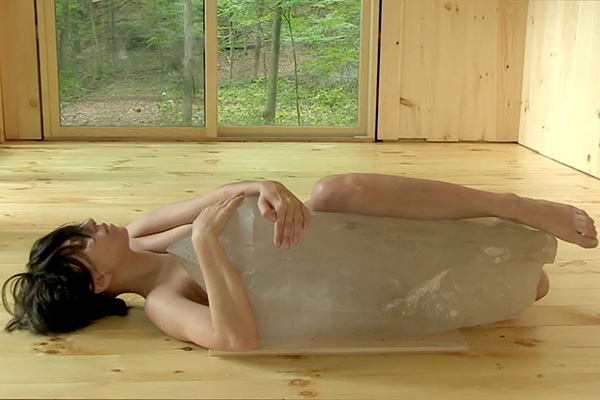Gaga and the Art of Empty Pretention
So many words could be dedicated to the varied and sometimes surprising reactions to this video. However, it seems more fitting to consider whether or not Gaga’s attempt to introduce art to the mainstream should be condemned or, like Jay Z’s, be forgiven – despite its lack of sincerity – due to the fact that it has prompted real discussion about the art itself.
Musicians frequently collaborate with artists in order to visually express a concept. Thom Yorke worked with Stanley Donwood to create the distinctive Amok cover. Kanye West commissioned Takashi Murakami to work on the aesthetics for The Graduation. Alice Cooper and Salvador Dali – of all combinations – made a hologram together. And just think for a moment about Yoko Ono and John Lennon. However, it is art and pop in particular that have established a firm, immovable and undeniable relationship.
Andy Warhol and his “celebration of celebrities” perhaps epitomises the fusion between art and mainstream pop. With the release of her album ARTPOP due this coming November, Lady Gaga claims to be starting a new art movement, akin to that driven by the infamous Warhol, in which “art drives pop and the artist is once again in control of the icon.”
Pop art’s surge in the mid-twentieth century reflected the desire of artists such as Warhol and Lichtenstein to bring art down to the level of the everyday (hence the tin cans and Brillo) and away from elitist control. Gaga attempts the reverse: the appropriation of art by pop culture with the aim of highlighting the latter’s underlying social commentary (although her latest single “Applause” cannot possibly be labelled as anything but shallow, meaningless and boring).
Is Gaga really the artist she claims to be? It isn’t clear exactly what her artistic goal actually is. On 11 November she will hold an exhibition, artRave, which will showcase collaborations between herself and artists such as Jeff Koons, Marina Abramovic and Robert Wilson. In “Applause” she pretentiously claims, “one second I’m a kunst [German for artist], then suddenly the kunst is me.” If there is any meaning in those lines, it is simultaneously obscure and yet superficial.
Conveniently, Gaga argues that she doesn’t know where the ARTPOP journey will take her, and says that it “could mean anything.” Art seems to be simply a mechanism through which she hopes to achieve the shock factor. Both she and Abramovic have stated explicitly that what they are hoping to do with their joint video is attract attention – Gaga for her album and Abramovic for the newly founded Marina Abramovic Institute. Sadly, it seems as though Gaga’s recent embracing of art is merely a publicity stunt.
However, like Jay Z, Gaga is indirectly confronting the social realities of our time, particularly social media and the role it plays in shaping cultural perspectives and values. Mimicking the rapper, Gaga will release a free app to complement the ARTPOP album later in September, designed to “make connections between music, art, fashion and technology.” Her use of social media is already having an effect: Abramovic’s Institute Kickstarter was able to reach its funding goal of US$600,000 directly because of the attention Gaga’s video brought to the cause. Should we criticise these musicians for their apparent lack of sincerity? Or, considering someone else will inevitably critique them for us, should we perhaps appreciate them for what they have, in their own way, managed to achieve?
My general feeling is that Gaga is simply exploiting art as a means to her own selfish ends rather than genuinely seeking to create art for its own sake. The free app is simply a tool to strengthen her fan-base, to enable “little monsters” to share in their admiration of her, and, as she explained on Facebook, to allow her to experience “the adrenaline of fame.” Whereas Jay Z’s collaboration between performance and art was clear and effective, Gaga’s has taken it too far – and it’s messy. If she uses art in a more streamlined fashion to promote an idea reflected in her music, it might be more convincing.
“Pop culture was in art, now, art’s in pop culture in me.” Mmmm, I beg to differ.



